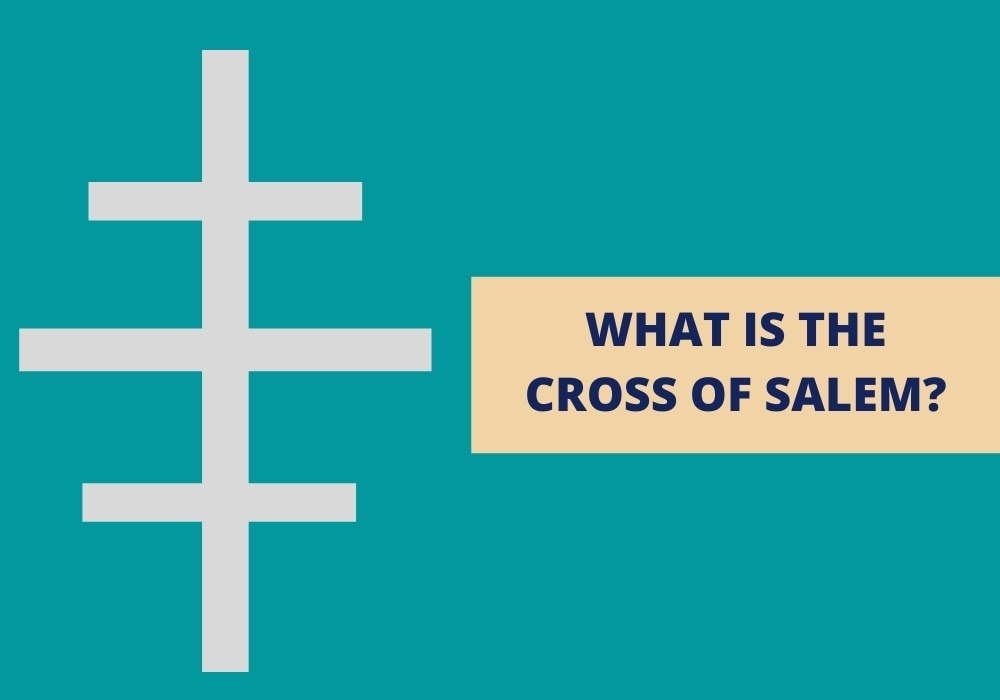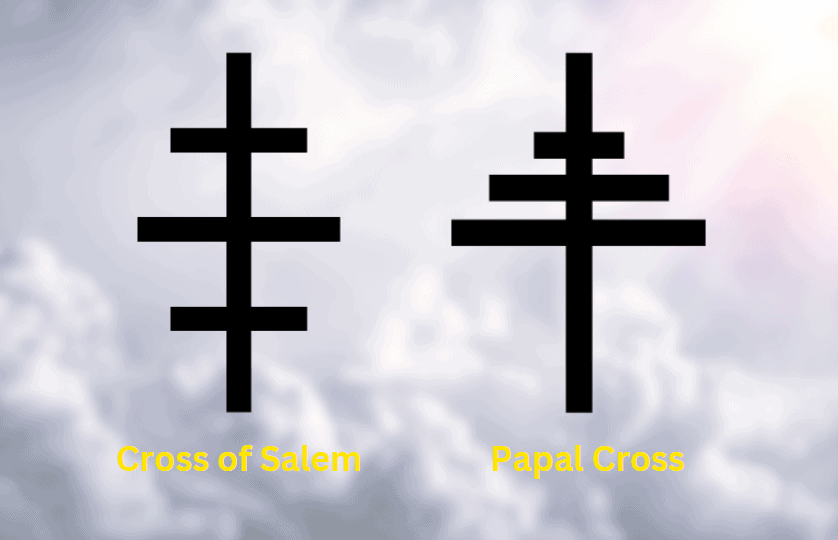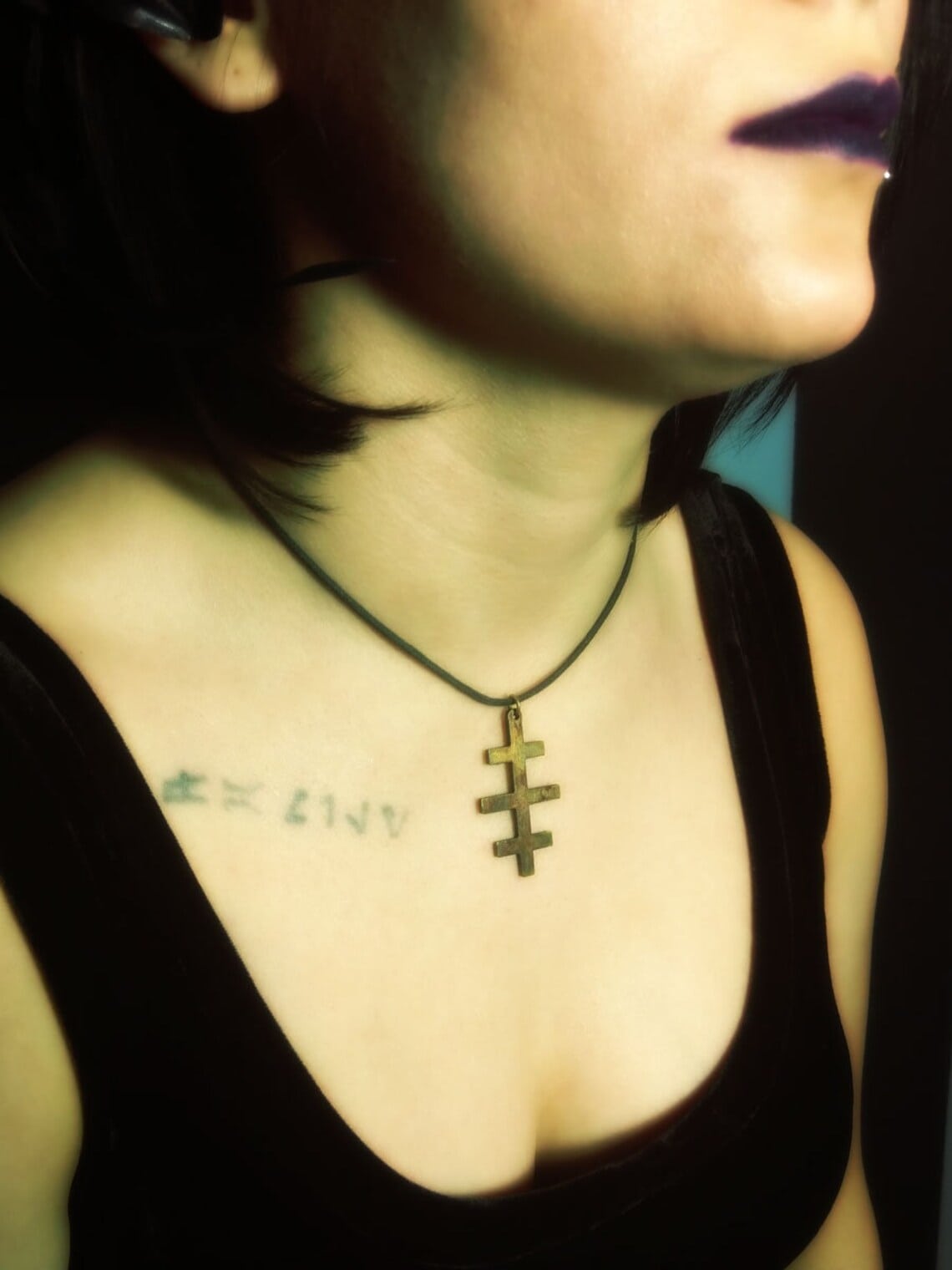
Table of Contents
The Cross of Salem is a variant of the Christian cross, distinguished by its three crossbeams rather than one. The longest horizontal beam comes at the center, flanked above and below by two shorter beams. The result is a symmetrical, three-barred cross.
But what does this cross signify and who uses it? Does the name Salem have anything to do with the American witch trials in Salem? Let’s find out.
History of the Cross of Salem

The Cross of Salem is one of the few three-barred crosses there is. It’s similar to the Papal Cross, but differs in how the crossbeams are laid out. The Papal Cross features three graduating crossbeams in the upper half of the cross. In contrast, the Cross of Salem features crossbeams spaced further apart, creating a symmetrical design.
Historically, the Cross of Salem has been linked to ecclesiastical authority. It’s often carried before the Pope during formal processions, signaling his role as the spiritual leader of the Roman Catholic Church. The association with the Pope is why the cross is also called the Pontifical Cross.
What Does It Symbolize?
The three bars of this cross are often thought to represent the three aspects of the Christian Trinity: the Father, the Son, and the Holy Spirit. In this context, it can be seen as a visual representation of core Christian beliefs about the nature of God.
Another interpretation is that the three bars represent the cross upon which Jesus was crucified. The longest bar represents the beam on which Jesus was nailed, the upper bar symbolizes the sign that was hung above Him declaring “Jesus of Nazareth, King of the Jews” (the upper bar), and the lower bar symbolizes the ledge on which his feet rested. This interpretation ties the Cross of Salem directly to the crucifixion and therefore to themes of sacrifice, redemption, and salvation.
In addition to this, as a variant of the Christian cross, the Cross of Salem carries with it all the broader symbolism of the cross itself. These include faith, resurrection, eternal life, and the intersection of the divine with the earthly.
In Freemasonry, the Cross of Salem holds significant symbolism. Freemason leaders frequently use it, identifying the bearer’s rank and authority within the order. The cross’s distinct design lends itself to easy recognition, marking those who bear it as figures of influence and leadership.
Why Is It Called “Cross of Salem”?
The origins of the name “Salem” can lead to some confusion. Some might link the Cross of Salem to the American town famous for its witch trials, but this is a misinterpretation. The term “Salem” actually stems from the Hebrew word meaning “peace” and is a shortened version of “Jerusalem,” the holy city of many major religions. So, this has nothing to do with the witch trials.
Other Uses

Apart from its religious and fraternal significance, the Cross of Salem also finds its place in the world of fashion and personal adornment. It is often featured in jewelry designs, including pendants and charms, and used as a motif on clothing.
These artistic uses enable the cross to transcend its religious origins, turning it into a symbol of personal faith, a fashion statement, or both.
Wrapping Up
Whether worn as a testament to one’s religious beliefs or simply appreciated for its aesthetic appeal, the Cross of Salem is a symbol with a rich history and enduring resonance.
Related Articles:
What Does the Jerusalem Cross Really Mean?
What is the Papal Cross and Why Is It So Important?
Tau Cross – Origins and Symbolism
History and Meaning of the Patriarchal Cross
What Does an Upside Down Cross (Inverted) Really Mean?
Lauburu: The Four-Headed Cross and Basque Tradition








